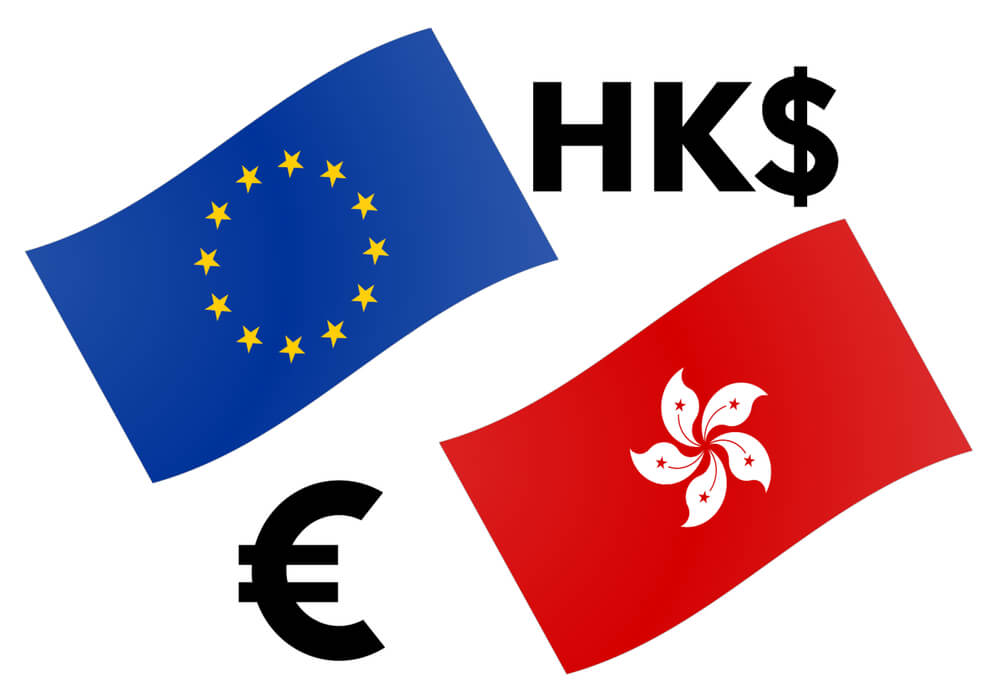Introduction
EUR/HKD is the abbreviation for the Euro area’s euro against the Hong Kong dollar. It is classified as an exotic currency pair that usually has high volatility and low trading volume. Here, the EUR is the base currency, and the HKD is the quote currency.
Understanding EUR/HKD
The current value of the pair represents the value of HKD that is equivalent to one USD. It is quoted as 1 EUR per X HKD. For example, if the value of this pair is 9.8764, then these many units of HKD are required to buy one US dollar.

Spread
In trading, the difference between the bid price and the ask price is referred to as the spread. Spread typically varies from broker to broker. The approximate spread on ECN and STP accounts is given below.
ECN: 17 pips | STP: 18 pips
Fees
The fee is the commission you pay to your broker for each position you open. The value of this, too, is in the hands of the broker. However, note that there are no fee STP accounts.
Slippage
Slippage is the difference between the price at which the trader executed the trade and the price he actually received from the broker. Essentially, slippage depends on two factors:
- Broker’s execution speed
- Market’s volatility
Trading Range in EUR/HKD
Knowing how much profit you can make or how much loss you can incur in a trade in a specific time frame is vital. The Trading Range can be assessed using the table given below. It represents the minimum, average, and maximum pip movement in EURHKD in different timeframes.

Procedure to assess Pip Ranges
- Add the ATR indicator to your chart
- Set the period to 1
- Add a 200-period SMA to this indicator
- Shrink the chart so you can determine a large period
- Select your desired timeframe
- Measure the floor level and set this value as the min
- Measure the level of the 200-period SMA and set this as the average
- Measure the peak levels and set this as Max.
EUR/HKD Cost as a Percent of the Trading Range
Total cost is not constant for every trade you take. It varies based on the volatility of the market. And the variation of it can be obtained from the two tables given below.
ECN Model Account
Spread = 17 | Slippage = 3 |Trading fee = 3
Total cost = Slippage + Spread + Trading Fee = 3 + 17 + 3 = 23

STP Model Account
Spread = 18 | Slippage = 3 | Trading fee = 0
Total cost = Slippage + Spread + Trading Fee = 3 + 18 + 0 = 21

The Ideal way to trade the EUR/HKD
Exotic currency pairs tend to have high volatility and low volume. And it is not ideal to trade during these times. So, let us find out the best times of the day to trade this currency pair by comprehending the above tables.
The higher percentages depict higher costs on the trade. It can be ascertained that the percentages are on the upper side in the min column. Hence, we can conclude that the costs are high when the volatility of the market is high and vice versa.
And, when it comes to determining the right time to enter the market, one may open positions when the volatility of the market is around the average volatility. This method will ensure both decent volatility and low costs.
Market orders result in slippage, and limit orders do not. Hence, placing limit orders is another way through which one can considerably reduce their total costs on the trade.

